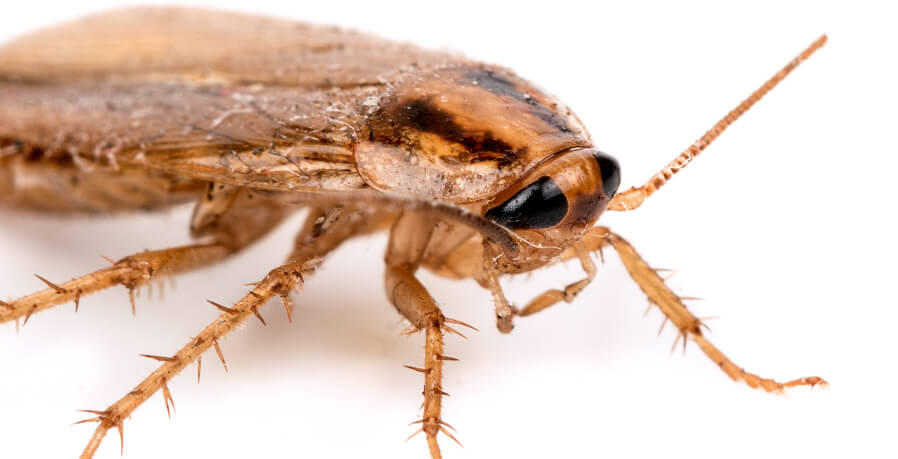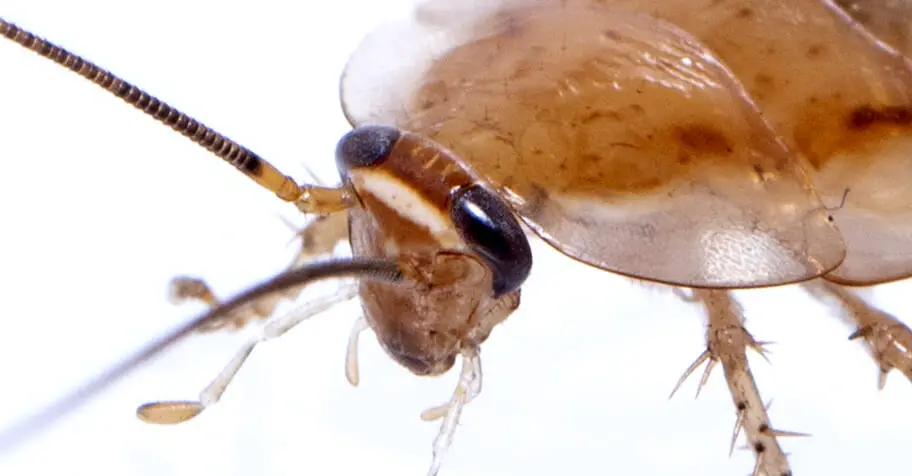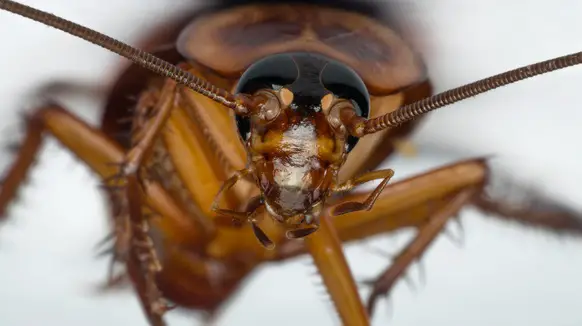Does Cockroach Have Eyes?
 Cockroaches are among the most resilient creatures on Earth. Their adaptability, speed, and agility make them one of nature’s most fascinating insects. An integral part of their unique attributes is their distinct vision.
Cockroaches are among the most resilient creatures on Earth. Their adaptability, speed, and agility make them one of nature’s most fascinating insects. An integral part of their unique attributes is their distinct vision.
Which allows them to thrive and survive in their nocturnal lifestyles. In this article, we delve deep into the world of the cockroach eye, uncovering the complexities and intricacies of this essential organ.
Cockroach’s Eye Structure
The cockroach boasts a more complex visual system unlike humans, with our two simple eyes offering a singular lens perspective. Each eye consists of over 2,000 hexagonal lenses, giving the cockroach an impressive and vast field of vision.
The Madagascar hissing cockroach, for example, has a staggering 2,400 to 2,500 hexagonal lenses in each eye. This multi-lens system is often described as “compound eyes.” With each lens capable of capturing a fragment of the roach’s environment, the insect can simultaneously perceive multiple facets of its surroundings.
While our human vision stitches together a singular, comprehensive image, the cockroach’s view comprises multiple mini-images, giving it a mosaic-like perspective of the world around it.

Mosaic Vision
The mosaic vision granted by the cockroach’s compound eyes serves it well, especially during its nocturnal escapades. As each ommatidium, or simple eye, focuses on an object in its direct optical line, a segment of the image is formed.
All these individual segments then converge in the roach’s brain, resulting in a comprehensive, unified image. In creatures with super positioned eyes like the cockroach, the ommatidia lack distinct separation by pigments. This particular structure is believed to enhance the reception of dim light, aiding in nighttime vision.
However, despite its seeming advantages, this type of vision can result in slightly blurred images due to overlapping individual perceptions. Nevertheless, this mosaic vision proves sufficient for a cockroach, especially when evading predators or scavenging for food in the dark.
Limitations & Peculiarities
No visual system is without its limitations, and the cockroach’s eyes are no exception. The shape of the lenses in a cockroach’s eyes isn’t consistently uniform. As you move toward the outer edge of the eye, these lenses become increasingly misshapen.
While occasional lens irregularities might be observed in the central region of the eye, the sheer number of lenses ensures that these irregularities rarely compromise the insect’s overall vision.
Interestingly, while these insects display a particular prowess in viewing their environment under green light, they are almost entirely blind to red light. This specific light sensitivity might be attributed to their nocturnal behavior, where the predominant light wavelengths differ from broad daylight.

A Testament to Resilience
One of the most astonishing aspects of the cockroach’s physiology is its ability to survive without its head—and by extension, its eyes—for an extended period. While the eyes are pivotal for navigation and survival, this bizarre capability underscores the cockroach’s tenacity and adaptability.
How Many Eyes Does A Cockroach Have?
A cockroach has a total of five eyes. This includes three simple eyes, or ocelli, situated on their forehead and two large compound eyes, each containing over 2,000 lenses.
Can Roaches See In The Dark?
Yes, cockroaches can see in the dark. Their compound eyes consist of thousands of hexagonal ommatidia that enable them to form multiple images of their surroundings, making them highly responsive.
Why does Cockroach Only Come Out At Night?
Cockroaches are nocturnal insects, making them most active during nighttime. They come out at night primarily to forage for food, to avoid predators, and because they prefer dark and damp environments.
Can Cockroaches See Color?
Yes, cockroaches can perceive color. They have a bichromatic vision, allowing them to see certain colors, especially in the green light spectrum ranging from 520 to 570 nm. However, they can’t discern colors like red. The full range of colors they can perceive is still under research.
Conclusion
Cockroaches, often dismissed as mere pests, are, in fact marvels of evolution, with their intricate visual system playing a crucial role in their survival. Their compound eyes, with thousands of individual lenses, offer them a unique view of the world—a mosaic of images.
When combined, it gives them a comprehensive perspective of their surroundings. Through understanding the intricacies of the cockroach’s vision, we gain insight into the sophisticated adaptations that have allowed this insect to persist and thrive for millions of years.

James E. Butkovich, Pest control maven with a knack for eco-friendly & Chemical solutions. Blogger with a mission to make homes pest-free, one post at a time.